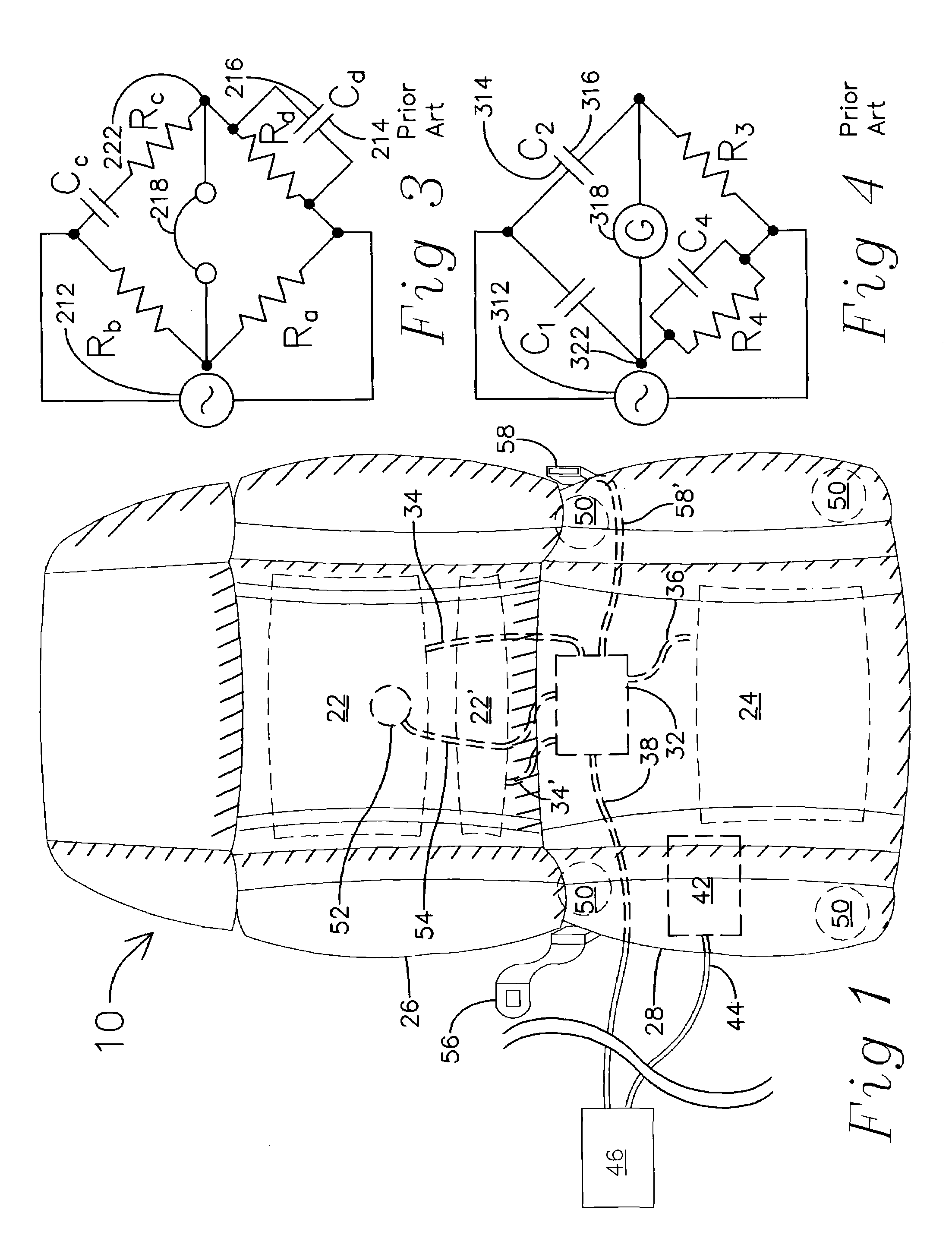Vehicle occupant presence and position sensing system
a position sensing and vehicle technology, applied in the direction of pedestrian/occupant safety arrangement, process and machine control, instruments, etc., can solve the problems of inability to reliably distinguish between occupants, rapid deployment of bags, and injuring people when deploying bags
- Summary
- Abstract
- Description
- Claims
- Application Information
AI Technical Summary
Benefits of technology
Problems solved by technology
Method used
Image
Examples
Embodiment Construction
[0068]Referring now to FIG. 1, the occupant presence and position sensing system 10 comprises two electrodes 22 and 22′ beneath the fabric of a vehicle seat back 26, and electrode 24 beneath the fabric of a vehicle seat cushion 28. An electronic circuit 32 is connected with electrode 22 by electrical conductor 34, with electrode 22′ by electrical conductor 34′, and with electrode 24 by electrical conductor 36. Electronic circuit 32 is connected with four load cells 50 by four electrical conductors (not illustrated) and seat belt latch 58 by conductor 58′. Load cells 50 sense the weight of the seat occupant. Latch 58 indicates through conductor 58′ if it is latched. Electronic circuit 32 is connected with distance sensor 52 by electrical conductor 54. Electronic circuit 32 is also connected with the decision making center 46 of the vehicle occupant protection system by electrical conductor 38. During operation of the vehicle, electronic circuit 32 repeatedly measures the capacitance ...
PUM
 Login to View More
Login to View More Abstract
Description
Claims
Application Information
 Login to View More
Login to View More - R&D
- Intellectual Property
- Life Sciences
- Materials
- Tech Scout
- Unparalleled Data Quality
- Higher Quality Content
- 60% Fewer Hallucinations
Browse by: Latest US Patents, China's latest patents, Technical Efficacy Thesaurus, Application Domain, Technology Topic, Popular Technical Reports.
© 2025 PatSnap. All rights reserved.Legal|Privacy policy|Modern Slavery Act Transparency Statement|Sitemap|About US| Contact US: help@patsnap.com



